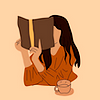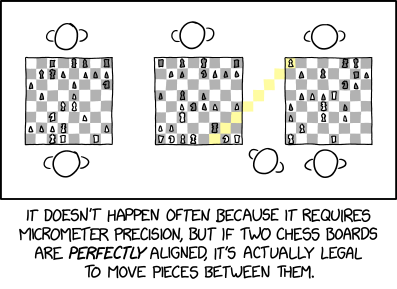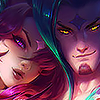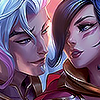on the first roll of the dice
Dec. 6th, 2025 20:25I also made another 2 lbs of candied pecans, so I have six jars filled and have to wash the other jars so they can also be filled.
Then I took a nap that felt way longer than it was, and so even though it's only like 8:20 I keep thinking it's 11:30 pm or something. Time is so weird.
*
[ SECRET POST #6910 ]
Dec. 6th, 2025 14:43⌈ Secret Post #6910 ⌋
Warning: Some secrets are NOT worksafe and may contain SPOILERS.
01.

( More! )
Notes:
Secrets Left to Post: 02 pages, 49 secrets from Secret Submission Post #987.
Secrets Not Posted: [ 0 - broken links ], [ 0 - not!secrets ], [ 0 - not!fandom ], [ 0 - too big ], [ 0 - repeat ].
Current Secret Submissions Post: here.
Suggestions, comments, and concerns should go here.
[ SECRET SUBMISSIONS POST #988 ]
Dec. 6th, 2025 14:35The first secret from this batch will be posted on December 13th.
| RULES: 1. One secret link per comment. 2. 750x750 px or smaller. 3. Link directly to the image. More details on how to send a secret in! Optional: If you would like your secret's fandom to be noted in the main post along with the secret itself, please put it in the comment along with your secret. If your secret makes the fandom obvious, there's no need to do this. If your fandom is obscure, you should probably tell me what it is. Optional #2: If you would like WARNINGS (such as spoilers or common triggers -- list of some common ones here) to be noted in the main post before the secret itself, please put it in the comment along with your secret. Optional #3: If you would like a transcript to be posted along with your secret, put it along with the link in the comment! |
Thirty Six Years
Dec. 6th, 2025 08:19The names of the women were:
Hélène Colgan
Nathalie Croteau
Barbara Daigneault
Anne-Marie Edward
Maud Haviernick
Maryse Laganière
Maryse Leclair
Anne-Marie Lemay
Sonia Pelletier
Michèle Richard
Annie St-Arneault
Annie Turcotte
Barbara Klucznik-Widajewicz
CBC: Montreal to honour 14 victims of Polytechnique massacre at ceremony.
Globe & Mail: Progress on combatting intimate-partner violence stalling under new government, advocates fear.
Re: 2025 Writing Log, Part 48
Dec. 6th, 2025 09:44I'm not joking btw. Readers need joy, and writers need positive feedback.
(And purity advocates need to go fuck themselves, perhaps literally.)
2025 Writing Log, Part 48
Dec. 6th, 2025 09:43It's been a tough semester, but I managed to make it through. I’m looking forward to having a few weeks to do fuck-all while I take the space I need to tackle a few deadlines and then think about what I’m doing and where I’d like to go in the future.
Saturday 06/12/2025
Dec. 6th, 2025 12:422) Sinterklaas has brought some delicious chocolate :P
3) More chocolate this evening as I’m going out for a drink with Kana at a great chocolate bar
Rec-Cember Day #5
Dec. 6th, 2025 00:47Today's Rec:
Sailing With Phoenix
Over the summer, a dude started sailing solo from Oregon to Hawai'i on a sailboat with his cat. He came across my TikTok FYP randomly, about a week into his trip. He has a whole Youtube channel documenting his decision to go, leaving his job, buying the boat, prepping the boat, and then the actual journey. He's since decided to get a new boat and sail non-stop around the world, and is documenting that journey. My autistic self was immediately charmed by him. And I learned a lot about boats and sailing (I love when people get intensely into a special interest and share it with people.) He has short form content on his TikTok but I really like the longer form videos and how he builds the narrative over time on Youtube.
[ SECRET POST #6909 ]
Dec. 5th, 2025 17:38⌈ Secret Post #6909 ⌋
Warning: Some secrets are NOT worksafe and may contain SPOILERS.
01.

( More! )
Notes:
Secrets Left to Post: 00 pages, 00 secrets from Secret Submission Post #986.
Secrets Not Posted: [ 0 - broken links ], [ 0 - not!secrets ], [ 0 - not!fandom ], [ 0 - too big ], [ 0 - repeat ].
Current Secret Submissions Post: here.
Suggestions, comments, and concerns should go here.
This Wedding Wreck Is A Real Stretch
Dec. 5th, 2025 14:00Today Judy L. shares with us "The Inspiration"...

...
... and "The Devastation":

Or, as I like to call it, "The Reason I Can't Stop Laughing."
(But only because "The Leaning Tower of Pisa Crap" is just a little too mean. :D)
******
P.S. I've been shopping for the best Christmas lights to hang outside this year, and I think you'll like what I bought:

BrizLabs Color-Changing Christmas Lights
This is a 115 feet of LED lights, which you can change from warm white to multi-color to any combination of the two! They have 11 different settings like "slo-glow" and "breathing," a remote control, and even built-in timers. All for $27! This is the best price for the most features I've found, plus they have great reviews, which is a must for me.
John & I installed 3 strands of these beauties last weekend, and they. are. GORGEOUS. Highly recommend.
*****
And from my other blog, Epbot:

Friday 05/12/2025
Dec. 5th, 2025 14:331) taking care of my baby nephew this afternoon
2) treated myself to a little tart from the bakery
3) reading
Re: Author chose not to use archive warnings
Dec. 5th, 2025 07:41I'm the sort of person who likes my smut spiced with the dread of being doomed by the narrative, so this story is a present to myself. I think I'll post it on the Saturday before the solstice in celebration. I love endless cycles of sex and death and rebirth. 🌿
Rec-Cember Day #4
Dec. 5th, 2025 01:41Today's rec:
In today's Intergalactic Mixtape, I recced two essays I enjoyed. I will copy myself in order to a) go to bed already and b) promote the latest issue, if you're into SFF news. Here are the links; full recs are at the link above!
#1: Ann Leckie and Arkady Martine: in conversation (space opera, empire, two very clever authors being thoughtful)
#2: The Year Of The Crone (a
Critical Role: Campaign 4, Episode 8
Dec. 5th, 2025 02:45( Spoilers under the cut. )
so he takes it to the net
Dec. 4th, 2025 21:15Outgoing CEO keeps trying to orchestrate the first half of 2026 and my boss and I are both like, wtf? but incoming CEO seems to be okay with going, nah, we're not doing that. I haven't been in those meetings, but the stuff coming out of it makes me feel like she's trying to prop up other internal candidate who wasn't chosen to be CEO, which would be 100% on brand for both of them.
In better news, my raise was in my check today, and allegedly the catch-up payment (it's retro to July 1) will be coming in the next pay period, just in time to start paying off Baby Miss L's Christmas gifts. I got a most delightful video of her singing "Let It Go" last night. <333 She's so cute!
*







